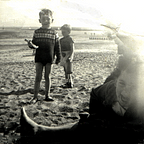Soccer Rules
Organized football was first played in English private schools in the early 1800s. ‘Houses’ or teams competed against each other, with players often wearing top hats. Because it was difficult to tell teams apart, different coloured shirts were introduced in the 1840s.
Many of the football playing school boys went on to the two English universities, Oxford and Cambridge. Football was very popular at Cambridge, but the young men from the different schools played with different rules.
Cambridge Rules
In 1848 a set of Cambridge Rules were established for everyone to play under.
Some of these rules now seem a little strange.
- After every goal the teams changed ends.
- A player could also catch the ball if it came directly from another player’s foot.
- A player could not touch the ball coming from the direction of his own goal until an opponent touched it.
The Cambridge Rules did establish two of the most important laws of football. The first was the idea of the ‘foul’ and ‘foul play’. The other was that the ball was only ‘in play’ on the pitch itself.
Sheffield Rules
In the late 1850s the first football clubs were started. The Sheffield club was the first club that was not a school or a university. It was formed in 1857, and its own rules. These were similar to the Cambridge rules.
- Pushing with the hands was allowed, but not kicking or tripping.
- Running with the ball in the hands was not allowed.
- The ball could be caught if it had not touched the ground.
- The ball could also be pushed on with the hand.
- There were no offside rules. Players known as “‘kick-throughs’” were positioned permanently in the opponents’ half.
- There was no limit on the number of players, or the size and shape of ball.
- There were no referees and the two captains settled any dispute.
The Sheffield Rules were like a cross between soccer and rugby.
Perhaps the strangest rule to a modern player was that each player had to wear a cap. One side wore red caps and the other wore blue. It is very difficult to head the ball if you are wearing a hat!
Changes needed
By the 1860s football was beginning to look like the game we know today. But there were still differences in the the rules used at different schools. At Eton, for example, passing was not permitted as it was in university football. Increasingly there was a need for a universal set of rules to apply wherever the was played.
The Football Association
On 26 October, 1863, a group of Victorian gentlemen representing the different football clubs met at the Freemasons Tavern in London. They arrived in horse-driven carriages, and spent the evening in a small gas lit office.
At this point football was a completely amateur game for ‘gentlemen’. No money was charged to watch matches. Most ‘stadiums’ were just pieces of open ground and tape was used instead of crossbars.
After many hours of argument, the clubs finally agreed on a single set of rules for ‘association’ football or soccer. They wrote these rules down in an ordinary exercise book. This exercise book is now in the FA museum.
The FA Rules
The new FA rules established some key elements of the modern game:
- the length of the pitch (about twice the length of today)
- the size of the goals (three times as big and without a bar or tape on top of the posts)
- players could still catch the ball, though not pick it up or run with it.
- boots with iron toes or soles were banned (very good news in the days before shin-pads!)
These rules evolved rapidly. Until 1875, teams changed ends after the scoring of each goal. But by 1925 the rules we have today were largely established.
